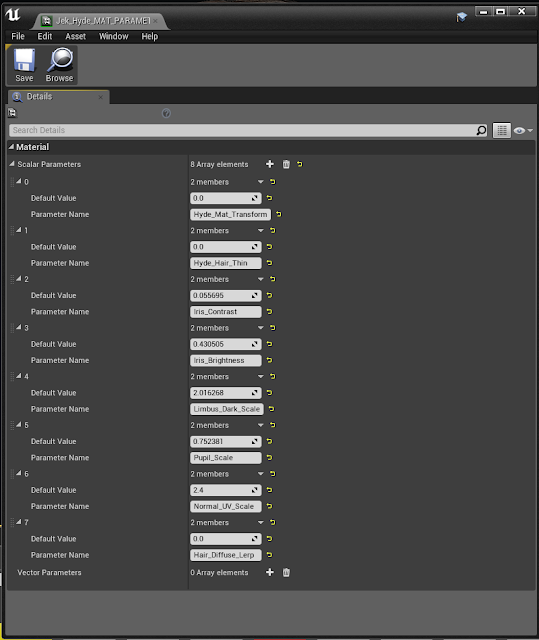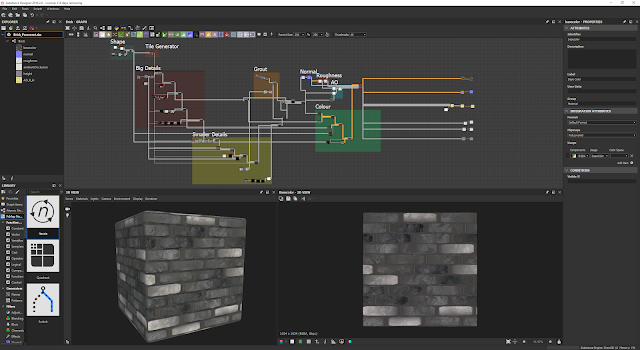Transformation Animation - Unreal Engine For the Unreal Engine part of the transformation, I ended up using Sequencer to handle everything, as it could be used for the camera, animation and modifying parameter values, all within one track editor, which proved to be really useful. The trickiest part of the transformation was figuring out how to blend between two materials, especially the skin shader as it was complex. For this, I ended up creating two different material functions for the skin shader, one for Jekyll and one for Hyde, then blending them in a material and instancing it, so that I could tweak the skin for both characters, whilst being able to blend between them. For the blending, I came across a feature called Material Parameter Collections (MPCs), which are basically global scalar or vector parameters that can be used in various ways and accessed through the Sequencer track editor. The great thing about Material Parameter Collections is that the same ...







